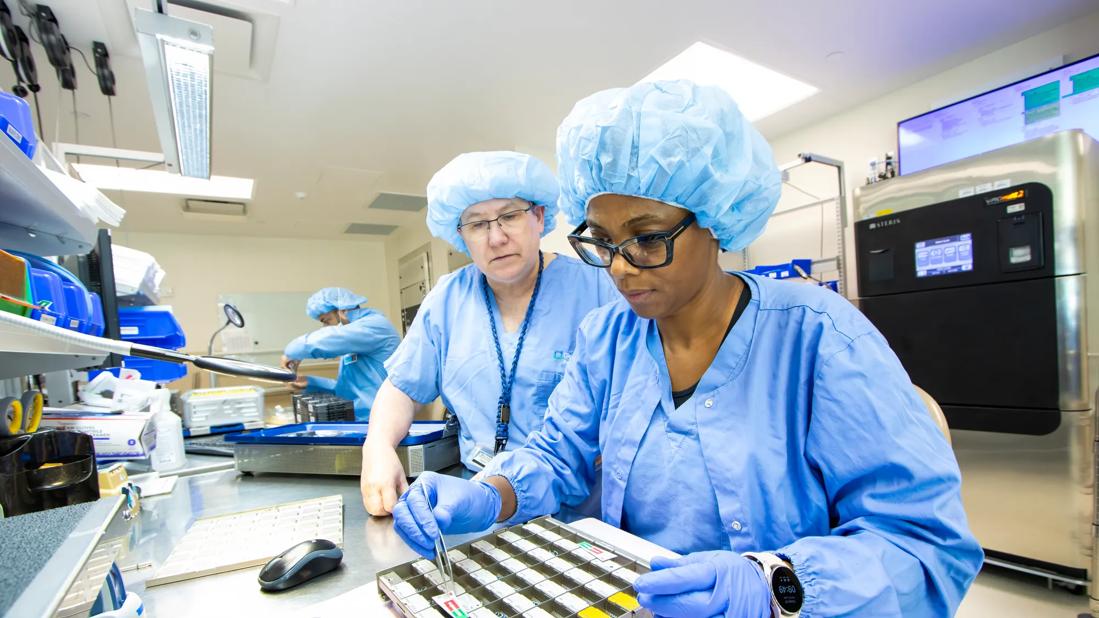Groups move the metrics in environmental services and sterile processing

Employee engagement and retention are constantly evolving challenges across all industries, but the stakes can be particularly high in the fields of sterile processing and environmental services, which play critical roles in the prevention of hospital-associated infections.
Advertisement
Cleveland Clinic is a non-profit academic medical center. Advertising on our site helps support our mission. We do not endorse non-Cleveland Clinic products or services. Policy
In an effort to curtail staff turnover and encourage participation, Cleveland Clinic’s Caregiver Office is zeroing in on the medical center’s sterile processing (SPD) and environmental services (EVS) departments with the creation of two dedicated task forces. Designed to address the specific workforce issues that affect EVS and SPD caregivers, each group is comprised of executive leaders, business leaders from their respective submarkets, and representatives from the Caregiver Office, including human resources, compensation and talent acquisition.
According to Michelle Rigsby, Senior Director, HR Shared Services, Cleveland Clinic currently employs:
Rigsby reports that the new task force meetings have succeeded in moving the needle. Between August 2024 and July 2025, the SPD’s overall turnover rate dropped from 32% to 25%, while overall turnover for EVS decreased from 43% to 37%.
“Prior to establishing the task forces, we used several well-intended, concurrent, yet disconnected activities to address staffing issues,” explains Andrea Kotecki, Executive Director of Operations. “Things started to change once we found a way to bring all the players together every few weeks. Our caregivers began to make connections across teams and resolve issues in a more cohesive manner.”
Advertisement
Both task forces are using a multifaceted approach to address turnover challenges, says Jamie Herbst, Director of HR Services, Division of Operations, noting an especially impactful initiative adopted by the SPD task force.
“We initiated a detailed review and revision of job descriptions to ensure they were up to date and accurately reflected the duties and responsibilities the position entailed,” she says. “This allowed the Compensation team to conduct a market review that resulted in a round of important adjustments.”
Following the review in early 2025, the SPD has had very few compensation-related resignations, Herbst adds.
Another successful initiative is an apprenticeship program established in partnership with the University of Akron. Participants are employed full-time at a Cleveland Clinic hospital and attend school. The education is paid for by Cleveland Clinic with the expectation that caregivers will complete the program and successfully pass the certification exam. To date, three employees have graduated from the program, and six others are currently enrolled.
Herbst also points to an interviewing program recently launched by the EVS task force, which has since been adopted enterprisewide. Previously, the talent acquisition team used auto-offers to fill EVS positions. Staff conducted interviews and made immediate offers to qualified applicants. Although the auto-offers helped fill positions more quickly, Herbst says they didn’t provide applicants with the opportunity to see firsthand what a role in the inpatient hospital environment would entail.
Advertisement
The new on-site method includes face-to-face interviews, site tours and leader introductions, resulting in better-informed candidates, fewer no-starts and less turnover, she explains. In 2025, EVS decreased its no-start metrics by 45%.
The Caregiver Office also developed a “stay” interview tool, now used by both groups, to identify and address issues within the first 90 days of employment.
“We found that a high volume of caregivers leave during their first year of employment,” Herbst says. “If we can catch them early and determine the issues they’re facing, then we have an opportunity to remove any barriers and encourage them to stick around.”
Cleveland Clinic leaders offer advice for implementing workforce-related task forces.
Advertisement
In addition to the initiatives presented earlier, the task forces have employed numerous other strategies, ranging from well-being assessments to employee spotlights.
As Kotecki notes, “You have to tackle this from multiple angles to address the acquisition of new talent, retain employees and enhance the overall workplace environment.”
Advertisement
Advertisement

Strategies for building connections, staying present

Development leader harnesses shared purpose to fuel meaningful giving

Expert tips from Cleveland Clinic’s Chief Legal Officer

Dedicated leader shares her passion for quality, education and professional development

Certified coaches help hospital teams build trust, improve communication

A thoughtfully designed program to elevate participants’ leadership potential

Curriculum helps participants match personal strengths to career goals

Specialized course helps APPs navigate clinical concerns and interpersonal skills